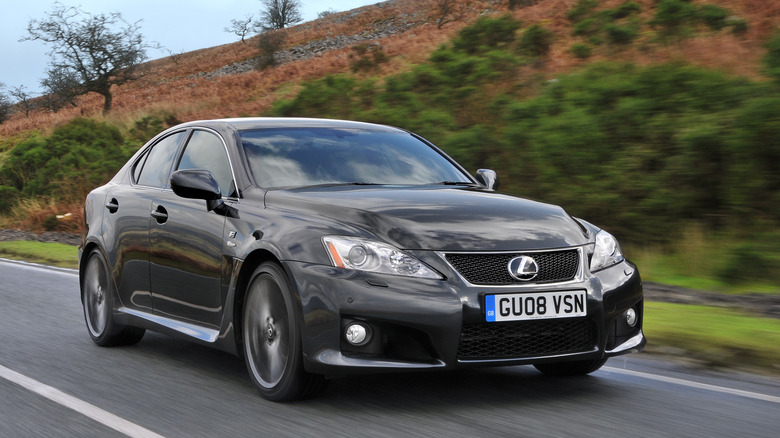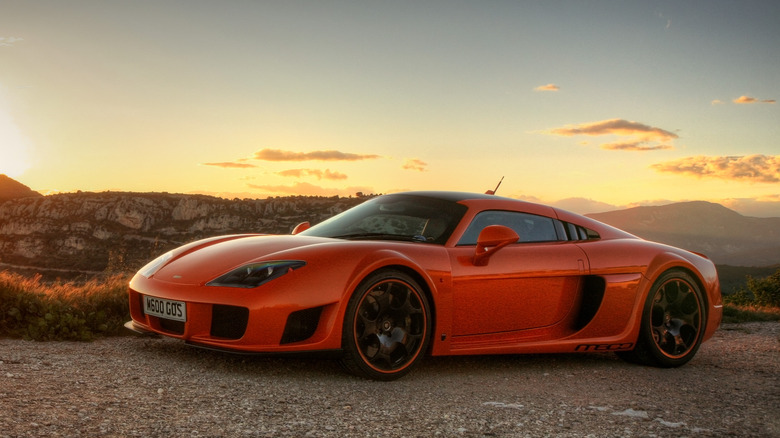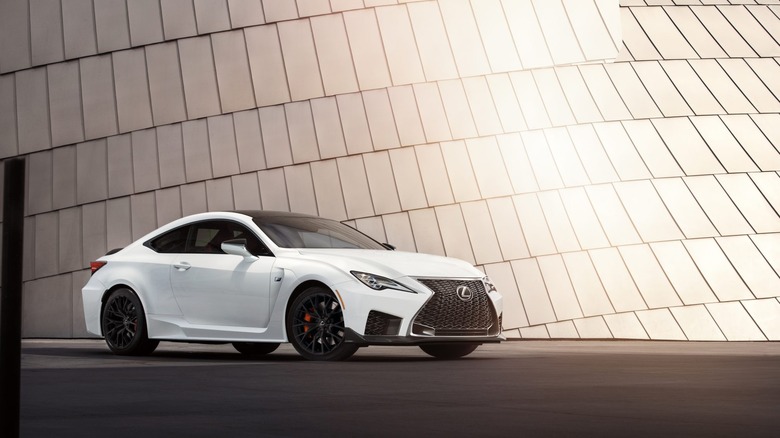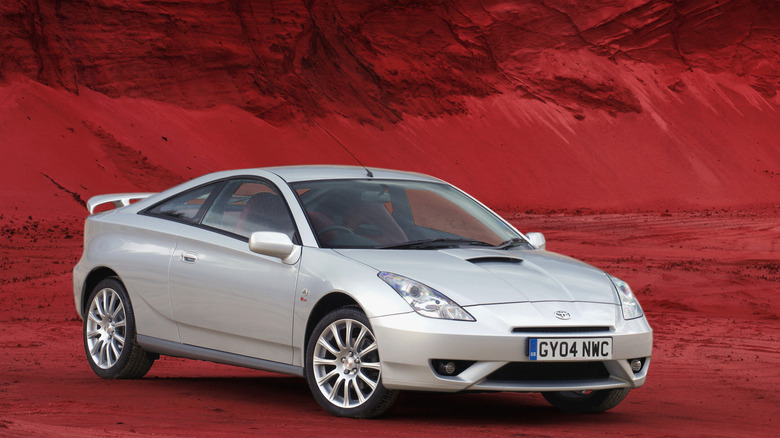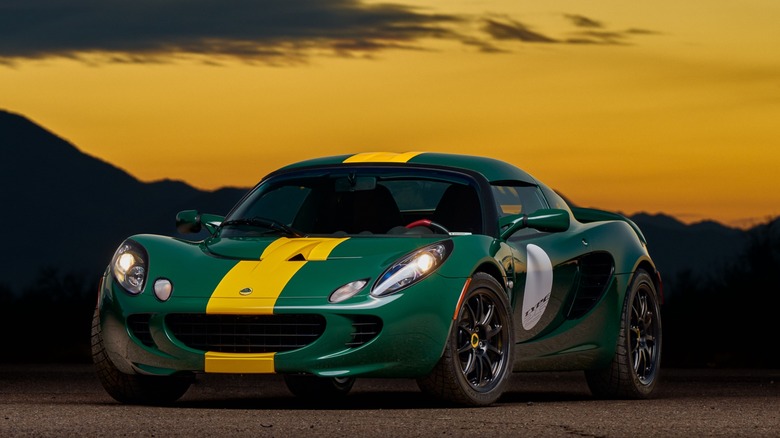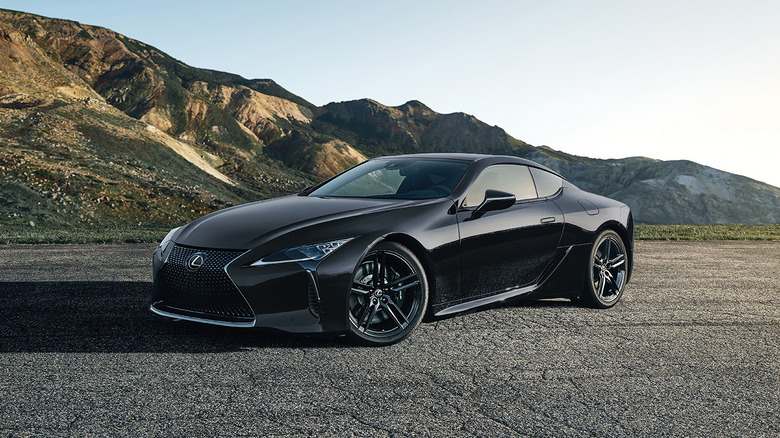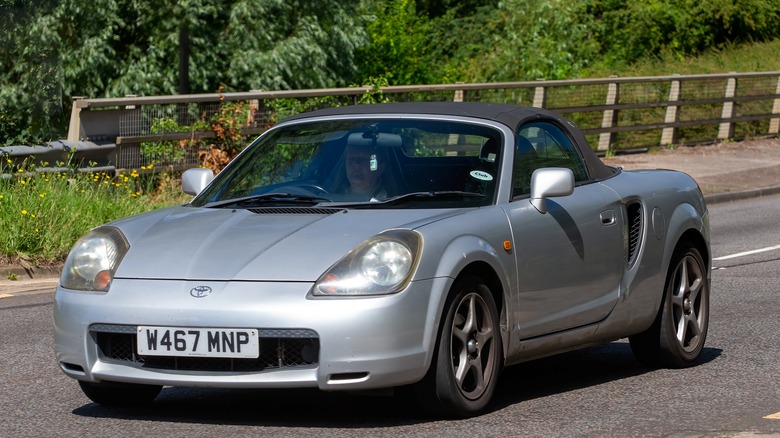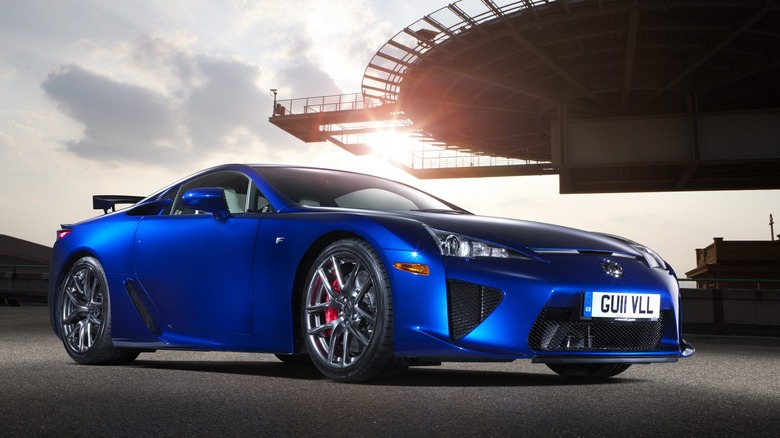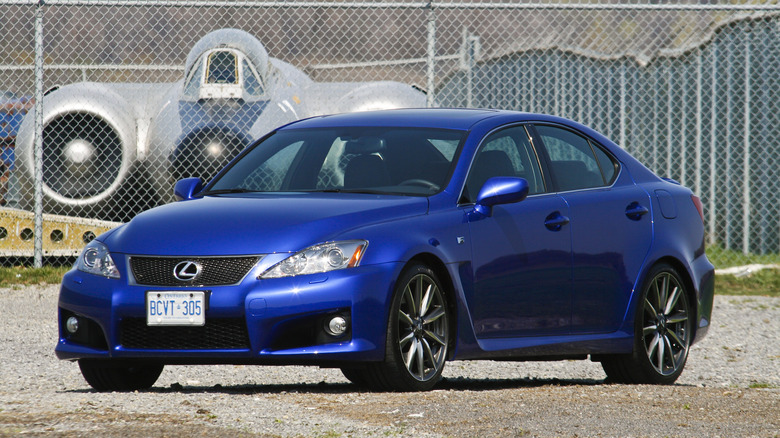Every Performance Car That Uses A Yamaha Engineered Powertrain
Aside from a few notable exceptions, automakers engineer powertrains with their own in-house experts. Designing and conceptualizing a powertrain can take years and billions in R&D money. Sometimes, some automakers are nice enough to let others use their powertrains, usually for companies that don't have the R&D money to create their own. Or maybe they're just GM, and they offer the rather special LS as a crate motor, which every supercar startup seems to be using.
Sometimes, however, even the automakers themselves have to enlist outside help for powertrain development. The outside help generally contributes to the powertrain's packaging or its engineering, resulting in a much more capable and better-suited final product. A common outside assistant for the development of some brilliant powertrains in the world of cars is Yamaha.
Yes, the people that make the musical instruments. While we don't hear about it all that much, you'd be surprised how many great performance cars have had input from Yamaha for their powertrains.
Noble M600
Noble Automotive is a lesser-known boutique manufacturer of track-focused sports cars. It's prominently known for the earlier M12 and M400, both of which were powered by a Duratec V6 from Ford. The M600, introduced in the late 2000s, was the company's first-ever supercar, and Noble went for the most left-field powertrain you could possibly think of.
The 4.4-liter twin-turbo V8 that lives behind the cabin in the M600 is actually a heavily reworked version of the Volvo B8444S. The B8444S was Volvo's only production V8 engine, and it only ever powered the second-generation S80 and the first-generation XC90. While it was done to Volvo's specifications, the Swedes commissioned Yamaha to design and engineer the engine to be suited for transverse layout platforms, which all of Volvo's models used.
Obviously, in the M600, it's mounted longitudinally behind the passenger compartment. There's also the fact that it has two turbochargers and develops 650 hp at maximum boost. This allowed the M600 to reach 60 mph in around three seconds and top out at 225 mph while also producing one of the most menacing V8 engine notes of all time. It was also terrifying to drive.
Lexus RC F
Lexus' F performance brand, intended to compete with BMW M and Mercedes' AMG, got off to a good start in the 2000s with the original IS F. Eventually, the F badge would grace some of the other models in the automaker's lineup, including the rather eccentric and perhaps underrated RC four-seater coupe.
The RC F was Lexus's first 2+2 performance coupe, with the BMW M4 set firmly in its sights. Under the hood lay the highly celebrated 5.0-liter naturally-aspirated V8, dubbed the 2UR-GSE. The 2UR-GSE first appeared in the likes of the Lexus LS, where it was connected to a hybrid component. After some engineering input from Yamaha, the 2UR was repurposed and became the de facto powertrain for most of the cars to come out of the F division.
In the RC F, the V8 dispatches 467 hp to the rear wheels through a conventional torque converter automatic transmission. The RC F did not win many hearts when it first made its debut, and the M4 ended up running rings around it. But nowadays, the RC F has depreciated pretty catastrophically, and it might be a good idea to have a look at one on the used market.
Toyota Celica GTS
Much like the Supra, the Celica ruled the world back in the 90s. The hopped-up GT-FOUR absolutely dominated the World Rally Championship, though it was unfortunately banned after Toyota was snitched for cheating the system. Either way, the GT-FOUR and its iconic Castrol livery was a complete rally legend, and it spawned a brilliant homologation special.
After this point, the Celica is generally agreed to have fallen from grace. The final generation Celica never offered AWD or a proper performance version, and most considered it to be unsightly to look at. However, in top-spec GTS form, the Celica did have something special to offer.
Under the hood was a 1.8-liter naturally-aspirated four-cylinder engine, also known as the 2ZZ-GE. This powertrain, co-developed with Yamaha, went on to power other performance Toyotas, the Pontiac Vibe GT, and perhaps most notably, the Lotus Elise. The 2ZZ was, in essence, Toyota's B-series. It had an 8,000 RPM redline and came with an advanced VVT system, like VTEC. Despite its merits, the final Celica did not go over well with car enthusiasts, which means finding one on the used market for barely any money is very easy.
Lotus Elise
The car that finally dug Lotus out of a seemingly bottomless near-bankruptcy hole. The original Elise, introduced in the late 90s, was a British car in every sense of the word, as it used a K-series four-cylinder engine from defunct British automaker Rover. The second generation was a totally different story, however.
In what is undoubtedly an attempt to improve its spotty reliability record, as well as the wish to enter the US market, Lotus saddled the second generation Elise with the 2ZZ-GE from Toyota, a 1.8-liter naturally-aspirated four-cylinder with a sky-high redline. While it wasn't all that powerful, with some versions putting out as little as 134 hp, the Elise weighed basically nothing, so it was still super fast. Later in its life, Lotus would also add a supercharger to the 2ZZ, totaling a monstrous 214 hp.
As mentioned previously, the 2ZZ-GE was a collaborative project between Toyota and Yamaha, born from the idea of sprucing up Toyota's existing ZZ lineup of four-cylinder engines for use in performance cars. As well as being super high-revving and pretty powerful, the 2ZZ is practically bulletproof.
Pontiac Vibe GT
You could almost consider this joint venture the Geo of the 2000s. General Motors' reliability record in the early 2000s still wasn't the greatest, so a joint venture was formed between GM and the one automaker that's a byword for reliability: Toyota. Toyota's fruit of this labor was the Matrix, assembled in Canada, whereas Pontiac gave the US market the Vibe, assembled at the NUMMI facility in Orange County.
Both of these cars would also get their own hot hatchback versions. While Toyota put together the Matrix SR5, Pontiac gave us the Vibe GT. Styling differences aside, the Vibe GT used the same powertrain as the Matrix XRS. Under the hood was the 2ZZ-GE 1.8-liter four-cylinder putting out 175 hp at a screaming 7,600 RPM. Power went to the front wheels through either a five-speed automatic or a five-speed manual transmission.
Today, the Vibe GT is one of the most underrated sport compact cars of the 2000s, and it's definitely worth a look on the used market if you're tired of all the Neon SRT4s and GTIs.
Lexus LC500
No one was really expecting this to come out of Lexus back in 2017. Essentially unchanged from the LF-LC concept on which it was based, the LC is Lexus' flagship grand touring coupe, undoubtedly one of the last vehicles of its kind. Despite the fact that we never got an F version of the LC, which is a total shame, the car we did get is still spectacular.
You can have the LC500 as a hybrid with a V6 powertrain, but don't bother. The full-fat LC500 is the pick of the lineup. Under the hood is a version of the sonorous, Yamaha-engineered 5.0-liter 2UR-GSE V8 developing 471 hp and 398 lb-ft of torque, and all of that goes to the rear wheels through a 10-speed automatic transmission that shifts like a dual-clutch, despite being a torque converter.
This makes the LC500 the last old-school grand tourer on the market. A classic Aston Martin V8 Vantage for the modern era. This is helped further by the LC's stunning exterior design, bold color options, and the availability of a convertible. The LC500 is a brilliant, brilliant car, and we'll be sad to see it go when it inevitably does.
Toyota MR2 Spyder
The final generation of Toyota's midship runabout sadly did away with the turbocharged variant, but it was still a special car. The styling was a little more out there, but people got used to it fairly quickly. Under the engine cover in the back was the 2ZZ-GE 1.8-liter four-cylinder, though it wasn't as powerful as some of the other legends that used it.
Horsepower was a comparatively measly 138 hp, and a mere 125 lb-ft of torque reached the rear wheels through the standard five-speed manual transmission. Toyota knew better than to offer an automatic, and the power figures really didn't tell the whole story. Thanks to a total lack of weight, the MR2 Spyder could sprint to 60 mph in about seven seconds.
That's not far off the Miata, and no one complains about that car's lack of speed, do they? There, in fact, lies the problem. The MR2 Spyder didn't really win people's hearts quite like the Miata did, and while the Miata continued to enjoy massive success, Toyota had to discontinue the MR2 Spyder after model year 2005. However, the good news is that the MR2 might make a grandiose comeback.
Lexus LFA
One of the most incredible supercar stories ever told, the Lexus LFA was Toyota's most talented engineers getting together and building the ultimate supercar. As well as the incredible aerodynamics and the story of the last-minute change from aluminum to carbon fiber, the heart of the LFA and undoubtedly its most notable feature was its powertrain.
To build the ultimate supercar engine, you need talent from multiple sources. That's why Lexus, once again, enlisted the help of Yamaha, who also tuned the sound that you all know and love. The LFA's 1LR-GUE 4.8-liter V10 engine was a true masterpiece of engineering. Despite having 10 whole cylinders, it was about the same size as a V8, and the magicians behind it managed to make it weigh about the same as a V6.
The V10 put out 552 hp, and peaked power arrived at 8,700 RPM, just 300 RPM before the orchestral 9,000 RPM redline. By the way, the engine could go from idle to redline in just 0.6 seconds, facilitating the need for a digital tachometer as an analog one couldn't keep up with it. The LFA's story is too long and too amazing to go into detail here, but it's a testament to Toyota and Yamaha's long-standing partnership, and it remains one of the greatest and most underrated supercars of all time.
Ford Taurus SHO
The Ford Taurus, along with the Explorer, are some of Ford's most successful historic models. The Taurus finally gave North America a fantastic option for a family sedan, and every generation enjoyed a good amount of success. For all but one Taurus generation, there was also a high-performance derivative known as the SHO.
SHO stands for Super High Output, and Ford certainly wasn't kidding. The original Taurus SHO used a naturally aspirated V6 developed by Yamaha. This engine was originally designed to be slotted into a sports car, and it had the potential to rev to 8,500 RPM. In the Taurus SHO, it only revved to 7,300, and it put out a respectable 220 hp.
Respectable is an understatement here, as the Taurus SHO was one of the cheapest ways to go fast back in the early 90s. Less than seven seconds to 60 mph for just $20,000 new? That's a deal. The second SHO also got a Yamaha-engineered powertrain, but it was a 3.4-liter V8, which worked surprisingly well. Ultimately, when the SHO came back for the final generation Taurus, Ford used its own EcoBoost V6. The earliest Taurus SHO is a criminally underrated 90s performance car, and if you can find a well-kept one, you might be able to embarrass older GTIs and VQ-powered sedans. It was, and still is, a sleeper.
Lexus IS F
After establishing itself in the world of luxury cars, Lexus decided to take the fight to the Germans in another area where it hurt most: performance sedans. Named after the Fuji Raceway, where Lexus does the majority of its testing, Lexus launched its F division in the mid-2000s with the original IS F.
Based on the regular XE20 IS sedan, the IS F was a special car. Not least because of the engine under the hood. With the help of Yamaha, Lexus re-engineered the 2UR-GSE 5.0-liter V8 to be all about performance and power but also retain some of the smoothness that it offered in the bigger sedan.
One of the main innovations in the IS F was the dual intake system, allowing the engine to scoop up much more air once you go past 4,200 RPM, delivering an incredible sound and unmatched power delivery. The Lexus IS F stands in a class of its own today, as it's a relatively affordable V8-powered sports sedan that looks great, handles great, sounds amazing, and has something that most Germans can only dream of offering in this segment: incredible reliability.
